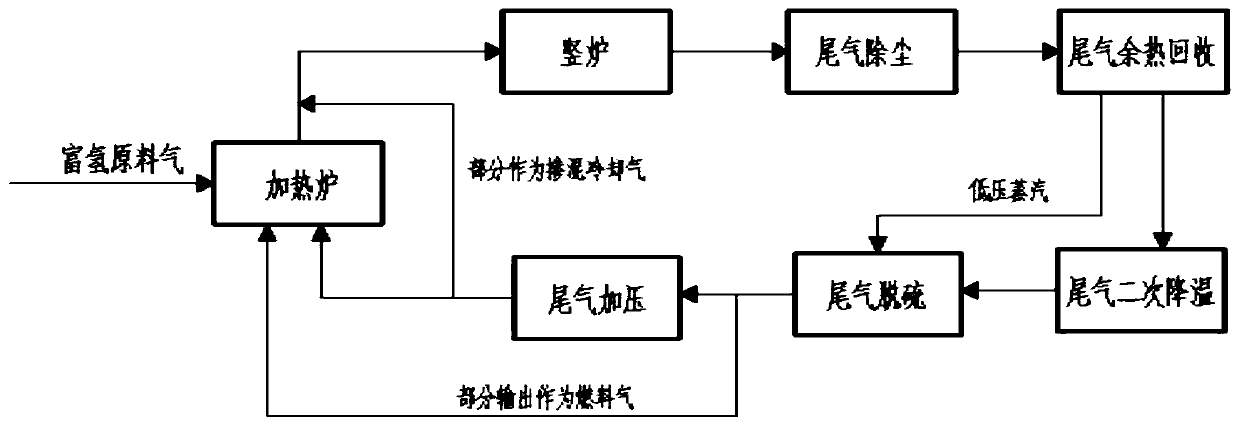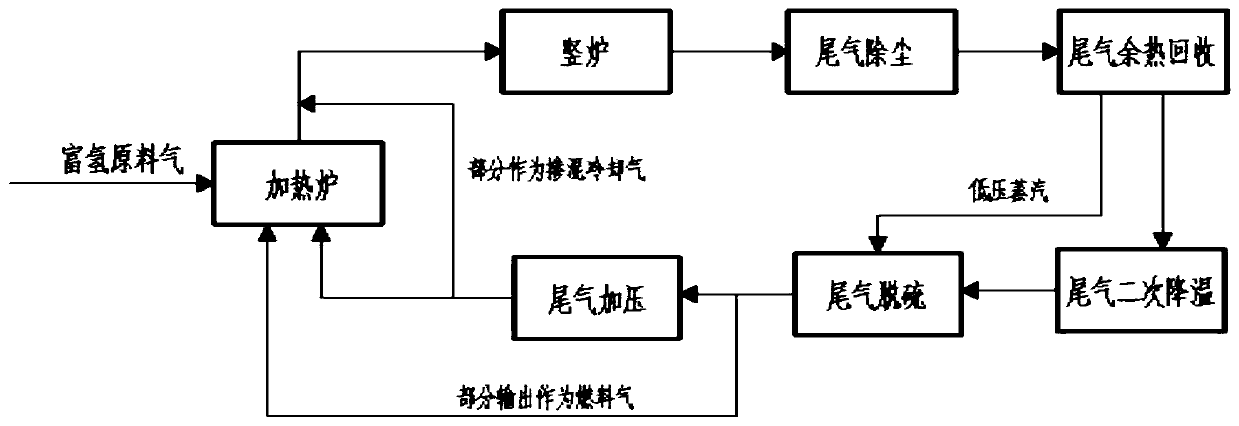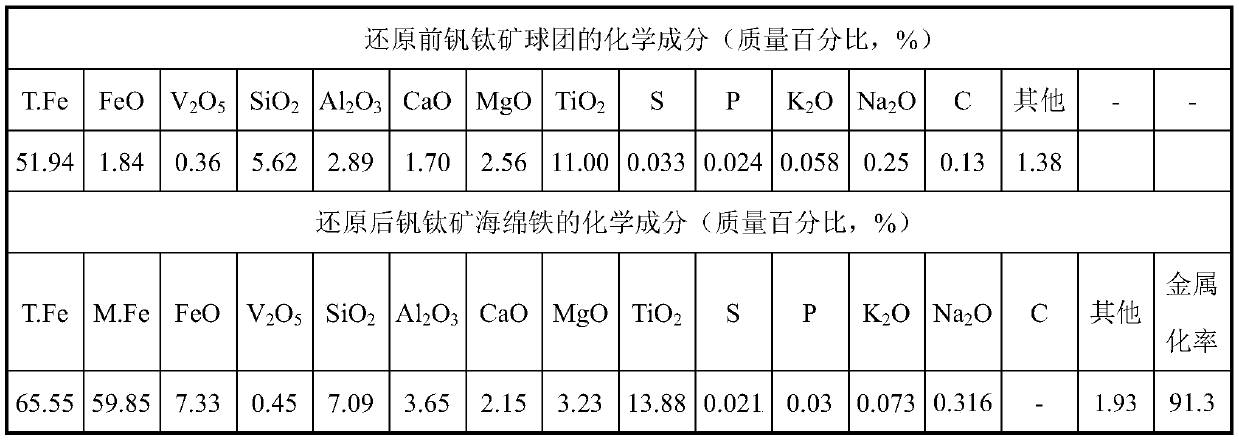Reducing method for producing sponge iron by ultralow carbon emission
A sponge iron and ultra-low carbon technology, applied in the field of metallurgy, can solve the problems of carbon deposition and gas pollution, and achieve the effects of high metallization rate, high reduction efficiency and simplified layout
- Summary
- Abstract
- Description
- Claims
- Application Information
AI Technical Summary
Problems solved by technology
Method used
Image
Examples
Embodiment 1
[0047] Production of vanadium-titanium ore sponge iron by reducing vanadium-titanium magnetite with this process
[0048] h 2 The volume ratio is 90%, N 2 The volume ratio is 2%, H 2 O The normal temperature hydrogen-rich raw material gas with a volume ratio of 8%, after purification, explosion limit determination and pressure regulation treatment, the raw material gas gauge pressure is 0.2MPa, and the tail gas discharged from the shaft furnace is dust-removed, waste heat recovery, secondary cooling, desulfurization Together with the pressurized furnace top exhaust gas, it enters the tubular heating furnace and is further raised to 980°C. The high-temperature exhaust gas discharged from the tubular heating furnace and part of the exhaust gas dust removal, waste heat recovery, secondary cooling, desulfurization and pressurized furnace roof After the tail gas is blended, the flow rate and preheating temperature of the blended cold air are controlled to form a reduced tail gas ...
Embodiment 2
[0053] Using this process to reduce common pellets to produce high-quality sponge iron
[0054] h 2 The volume ratio is 96%, N 2 The volume ratio is 2%, H 2 O The hydrogen-rich raw material gas at room temperature with a volume ratio of 2% has a gauge pressure of 0.25 MPa after purification, explosion limit determination and pressure adjustment treatment, and the exhaust gas discharged from the shaft furnace is dust-removed, waste heat recovered, secondary cooling, and desulfurization Together with the pressurized furnace top exhaust gas, it enters the tubular heating furnace for further temperature increase. The high-temperature exhaust gas discharged from the tubular heating furnace has a temperature of 930°C, and is then combined with part of the exhaust gas after dust removal, waste heat recovery, secondary cooling, desulfurization and pressurization. After the furnace top tail gas is blended, by controlling the flow rate of the blended cold air, a reduced tail gas with ...
PUM
 Login to View More
Login to View More Abstract
Description
Claims
Application Information
 Login to View More
Login to View More - R&D
- Intellectual Property
- Life Sciences
- Materials
- Tech Scout
- Unparalleled Data Quality
- Higher Quality Content
- 60% Fewer Hallucinations
Browse by: Latest US Patents, China's latest patents, Technical Efficacy Thesaurus, Application Domain, Technology Topic, Popular Technical Reports.
© 2025 PatSnap. All rights reserved.Legal|Privacy policy|Modern Slavery Act Transparency Statement|Sitemap|About US| Contact US: help@patsnap.com



